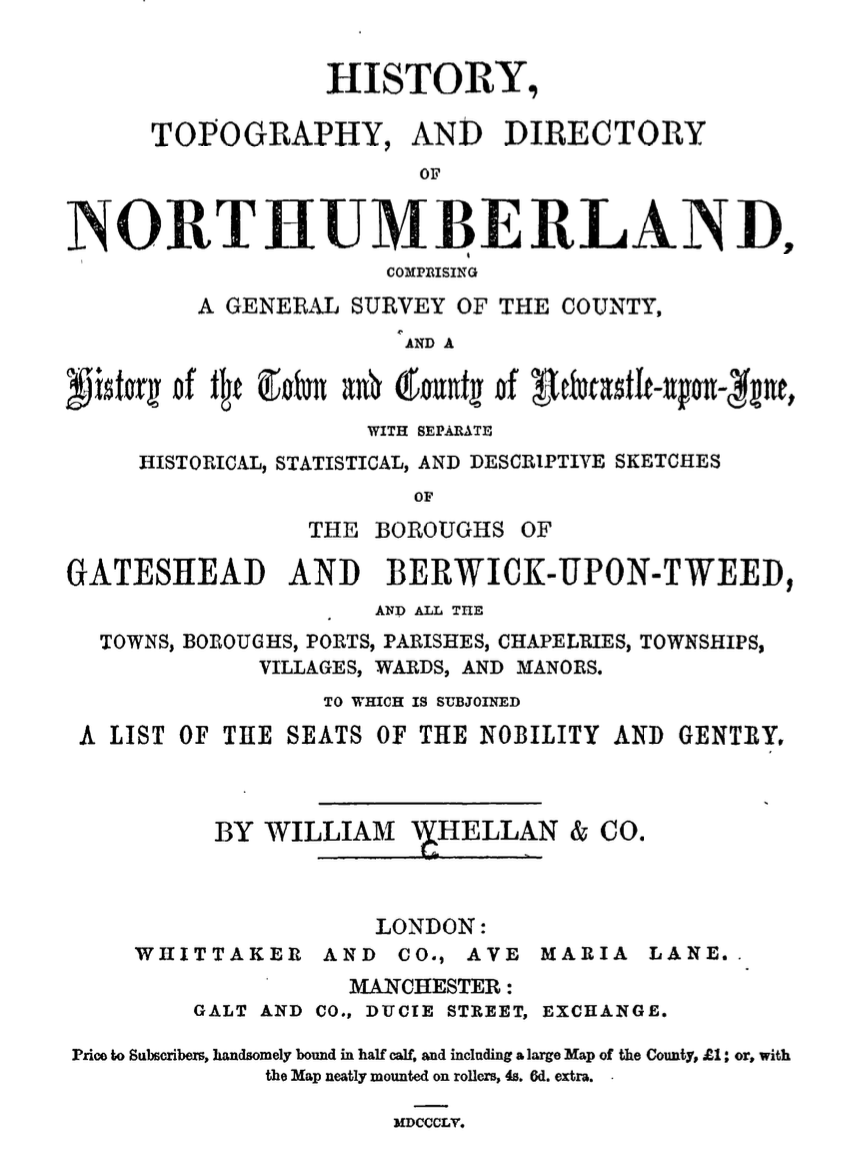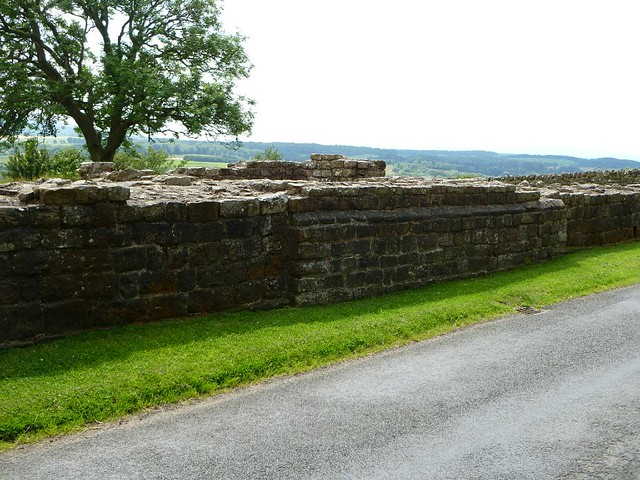Topics > Northumberland > Civil Parishes in Northumberland > Alnwick Town Council area > Alnwick Parish, 1855 > Alnwick Abbey, description
Alnwick Abbey, description
Extract from: History, Topography, and Directory of Northumberland...Whellan, William, & Co, 1855.
ALNWICK ABBEY
ALNWICK ABBEY. This was formerly an abbey of Premonstratensian Canons, dedicated to the Blessed Virgin and St. James. It was founded in the year 1147, by Eustace Fitz John, who, by his marriage with Beatrice, the daughter and heiress of Ivo de Vesci became Lord of the barony of Alnwick. From the charter of foundation addressed to William de Sancta Barbara, Bishop of Durham, it appears that the above named Eustace Fitz John amply endowed it out of his baronial possessions, annexing to it the village of Hincliff, with its demesnes, wastes, and the service of half the tenants; two parts of the tithes of the lordships of Tuggall, Alnham, Heysend, and Chatton: one moiety of the tithes and two bovates of land at Gyson, the church of Haugh, the lands of Ridley and Morewick Haugh, together with the liberty of erecting a corn mill on the river Coquet, and of raising as much corn on the wastes there, as the convent could plough. With the liberty to grind at the "punder's 'mill, muicture free." He also granted the canons; for their table, a tithe of all the venison and pork killed in his parks and forests, and of all fish taken in his fishery by his order, and a salt work at Warkworth. In addition to the extensive edowments just mentioned, William de Vesci, the son of Eustace, "for the ,health of his soul and, that of his father Eustace and his mother Beatrice, and of his ancestors," granted three charters, by which he gave to God and the church of the Holy Mary of Alnwick, and to the canons of the Premonstratensians order there serving God, the church of Chatton with everything pertaining thereunto, the church of Chillingham, and the church of Alnham in free and perpetual alms. The canons also held the advowsons and appropriations of St. Dunstan's, in Fleet-street, London, and of Sakenfield, in Yorkshire; also lands at Chatton and Falloden, and four tenements and a garden in Newcastle-upon-Tyne. From the chronicles of this abbey, which are preserved in the library of King's College, Cambridge, it appears that several of the Percies were interred here. The abbots of this house were summoned to the several parliaments held during the reigns of Edward I, and Edward II. At the Dissolution, the annual revenues of this abbey were estimated at £189 15s. 0d. by Dugdale, and £194 7s. 0d. by Speed, there being then thirteen canons. The site was granted, in the fourth year of the reign of Edward VI. to Ralph Sadler, and Lawrence Winnington, but it was afterwards sold, with its demesnes, to Sir Francis Brandling, Knt., and came subsequently into the possession of the Doubleday family, from whom it passed to the Hewitsons, who sold the portion containing the abbey to the Duke of Northumberland. Of the abbey buildings, the gateway tower alone remains, which, from, the style of its architecture, and the armorial bearings with which it is adorned, appears to be of more modern date than the foundation of the house. The tower is of an oblong form, and possesses on each corner, an exploratory turret, while other portions of the building, which are in excellent preservation, show that it has been built as a defence to the conventual structure which it adjoined.










